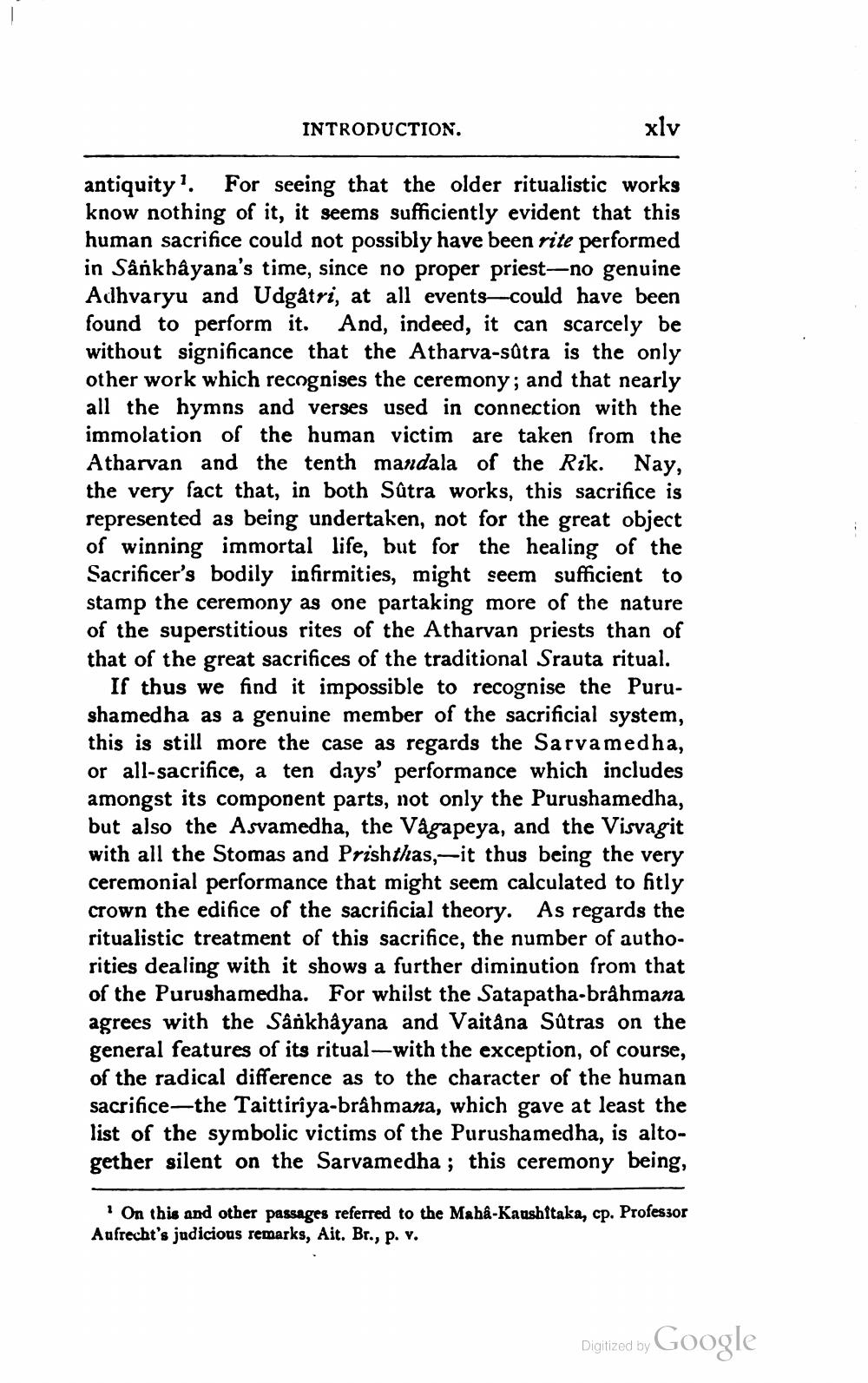________________
INTRODUCTION.
xlv
antiquity'. For seeing that the older ritualistic works know nothing of it, it seems sufficiently evident that this human sacrifice could not possibly have been rite performed in Sankhayana's time, since no proper priest-no genuine Adhvaryu and Udgåtri, at all events—could have been found to perform it. And, indeed, it can scarcely be without significance that the Atharva-sútra is the only other work which recognises the ceremony; and that nearly all the hymns and verses used in connection with the immolation of the human victim are taken from the Atharvan and the tenth mandala of the Rik. Nay, the very fact that, in both Sûtra works, this sacrifice is represented as being undertaken, not for the great object of winning immortal life, but for the healing of the Sacrificer's bodily infirmities, might seem sufficient to stamp the ceremony as one partaking more of the nature of the superstitious rites of the Atharvan priests than of that of the great sacrifices of the traditional Srauta ritual.
If thus we find it impossible to recognise the Purushamedha as a genuine member of the sacrificial system, this is still more the case as regards the Sarvamedha, or all-sacrifice, a ten days' performance which includes amongst its component parts, not only the Purushamedha, but also the Asvamedha, the Vågapeya, and the Visvagit with all the Stomas and Prishthas,-it thus being the very ceremonial performance that might seem calculated to fitly crown the edifice of the sacrificial theory. As regards the ritualistic treatment of this sacrifice, the number of authorities dealing with it shows a further diminution from that of the Purushamedha. For whilst the Satapatha-brâhmana agrees with the Sarkhayana and Vaitana Sûtras on the general features of its ritual—with the exception, of course, of the radical difference as to the character of the human sacrifice-the Taittiriya-brahmana, which gave at least the list of the symbolic victims of the Purushamedha, is altogether silent on the Sarvamedha; this ceremony being,
1 On this and other passages referred to the Maha-Kaushitaka, cp. Professor Aufrecht's judicious remarks, Ait. Br., p. v.
Digitized by Google




